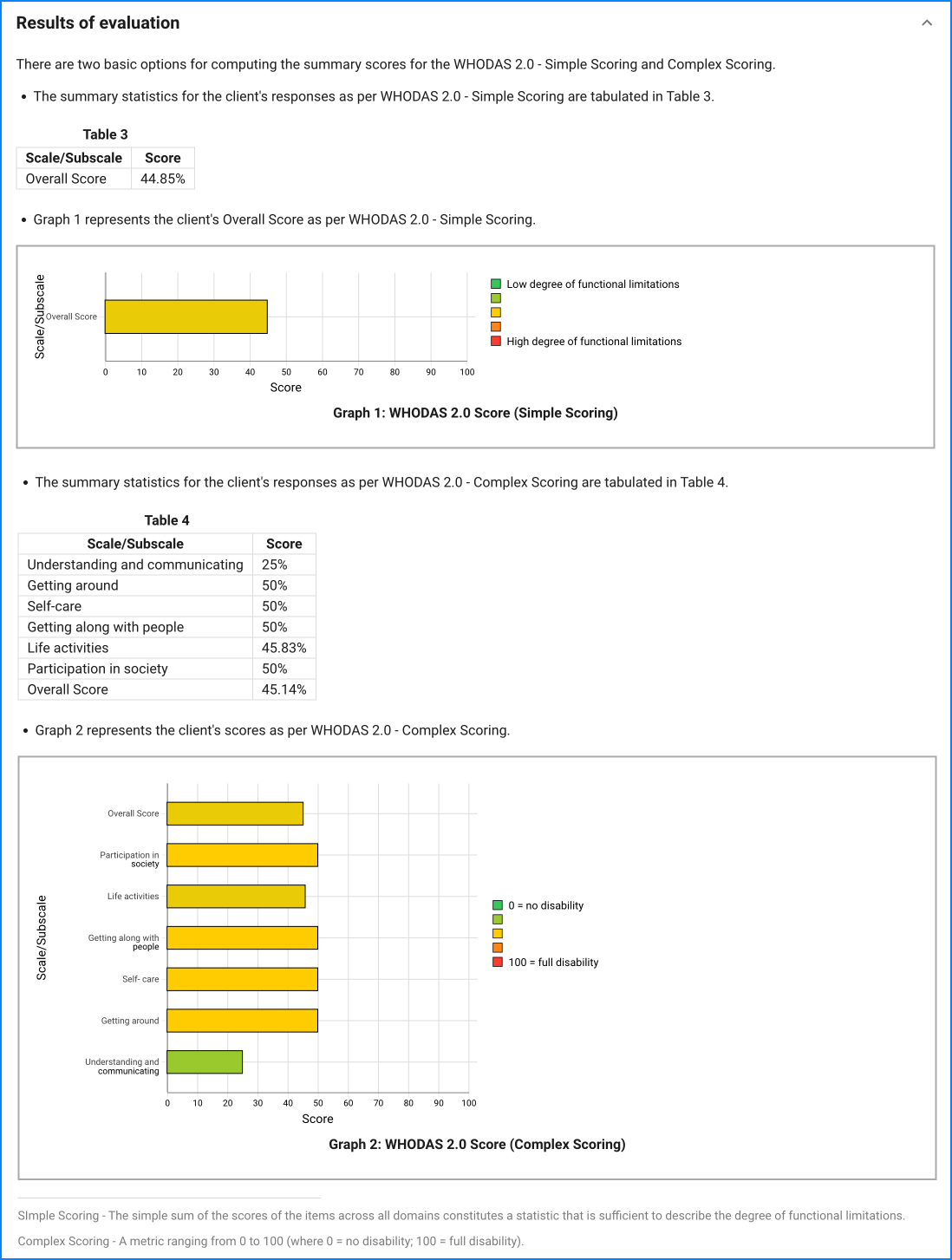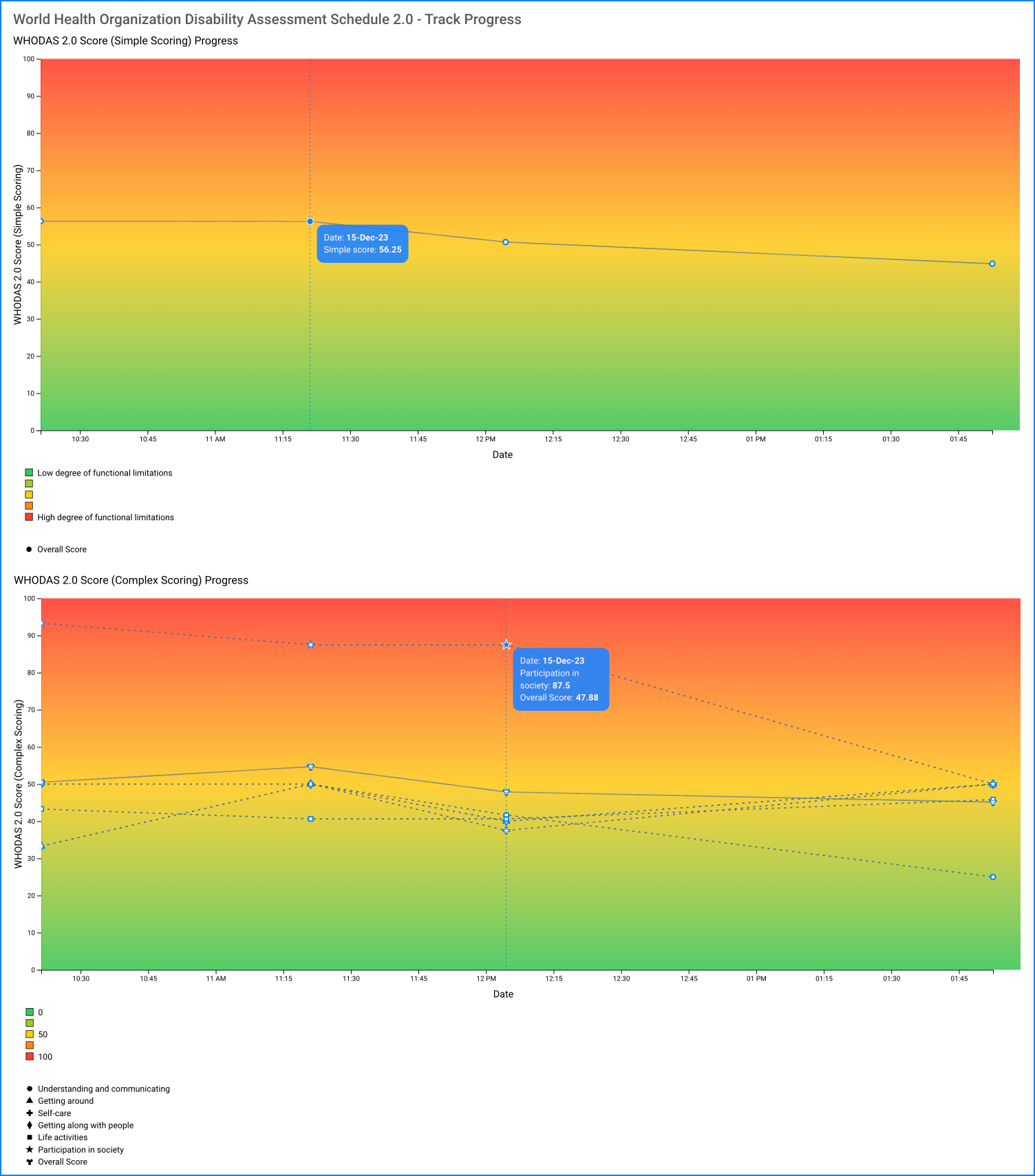There are two basic options for computing the summary scores for the WHODAS 2.0 short and full versions
The adult self-administered version of the World Health Organization Disability Assessment Schedule 2.0 (WHODAS 2.0) is a 36-item measure that assesses disability in adults age 18 years and older. It assesses disability across six domains, including understanding and communicating, getting around, self-care, getting along with people, life activities (i.e., household, work, and/or school activities), and participation in society. Each item on the self-administered version of the WHODAS 2.0 asks the individual to rate how much difficulty he or she has had in specific areas of functioning during the past 30 days.




